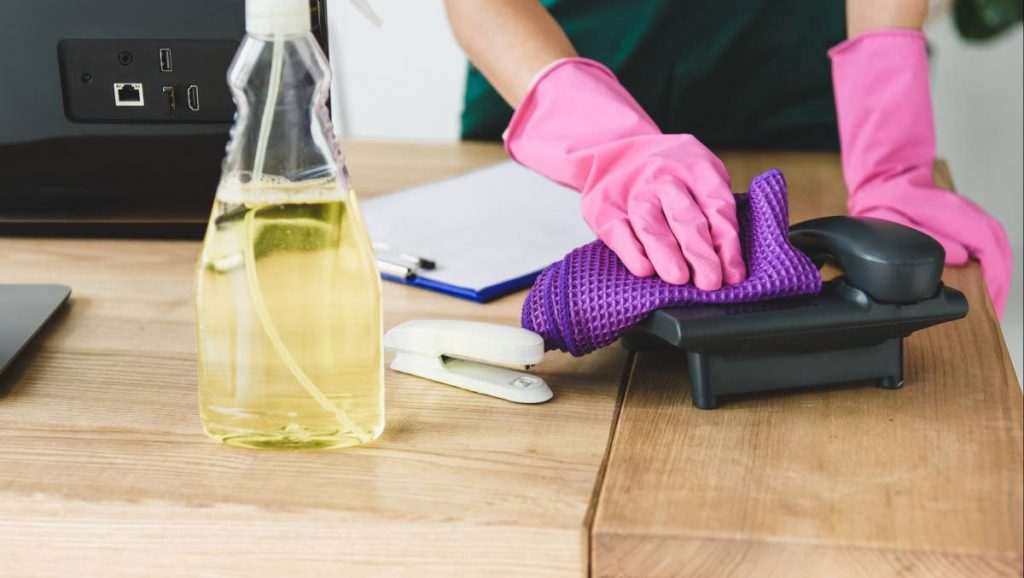Covid19: Containing workplace contamination

Human resource leaders of some foreign-owned firms have been mandated to reach out to their group corporate HR offices for guidance on how to prepare for the impact of the coronavirus in the workplace.
The truth is that the local workplace as a community can participate in its own way as a collaborative national response. It can educate its members and stakeholders to reduce not only contamination and transmission risks, but also stymie the spread of misconceptions about covid19.
The virus is easily transmitted through contact with infected people or contaminated objects. It is not transmitted through air vents or ducts, however, carriers can transmit the virus before symptoms appear and this, therefore, makes it more dangerous and much easier to transmit.
Countries, including TT, are developing and are putting in place response protocols as a national community. Early identification, containment measures, isolation mandates and tracing the source of possible contamination seem to be key to limiting the spread. Other controls include adopting stringent hygienic practices like washing of hands and properly sanitising places and surfaces and of course education.
The spread of the virus has caused cities to virtually shut down, restrictions of flights and cancellation of major events, food shortages, economic disruption etc. The outbreak is even causing severe implications to trade and investment, global stock market performance and of course, workplace behaviour and practices.
So, how can the workplace cope and what can we do to ride it out and play our part in limiting its spread?
Firstly, we can only hope that officials have the right systems in place like getting the local health facilities up to speed, supplementing and training staff and ensuring they have all the necessary tools to perform their duties safely and efficiently. They should be made to go into local communities and workplaces to educate citizens and employees. This will naturally forge a collaborative approach between official government strategy and the workplace.
A robust screening and testing regime should be extended directly into the workplace, while ensuring that isolation or quarantine measures are adequate to support our collective effort.
Employees who are advised to self-isolate (even if they have no symptoms) should be allowed sick leave with pay. Government's pandemic leave is noteworthy.
This particular measure would rely on trust and truthfulness. A worker may report exposure just to take advantage of the allowance and wrongfully report possible exposure just to get leave. But this is the case where it’s better to be safe than sorry. The work from home strategy has also become a popular go-to option, particularly for big companies with significant operations in high impact areas.
We can also learn from the Chinese experience. Beijing’s four departments of health, employment, housing, and emergency management jointly issued a "notice on further defining epidemic prevention requirements for office units in commercial buildings." I have adapted some of the recommended safety steps to fit our local circumstances. The relevant ones include:
• Encourage a reduction of workplace personnel through flexible working systems eg, shift, working from home when/where possible.
• Employees who travel should be confined at home or a centralised location for a 14-day monitoring. They should report any symptoms and seek medical treatment.
• Monitor body temperature of employees daily and assist with further testing and allow time-off for quarantine.
• Half the maximum capacity of any elevator and require persons not to stand face-to-face.
• Reduce density of office staff and ensure on duty employees are not in cramped conditions and individual workspaces are not less than 2.5 square metres.
• Clean and disinfect public parts, surfaces, spaces and facilities daily avoid physical contact between co-workers as much as possible.
• Workplace canteens, kitchens and utensils, as well as restrooms and toilet facilities should be regularly sanitised. Public tableware must be disinfected on a daily basis.
• It may be necessary to effectively monitor visiting international staff, particularly those who may have recently visited high cluster areas.
• Employers may need to restrict air travel and encourage more electronic meetings.
For the workplace that does not have a health and safety team/department, HR should lead the coordination and implementation of the safety points above.
Of course, the rights of individuals should always be considered in tandem with the rights, health and safety of stakeholders. The workplace can adapt and adopt the above suggestions in an attempt to control and minimise contamination and the spread of this virus which now carries a mortality rate of almost nine per cent.
The productivity impact on the workplace must also be considered. How will the closure of schools and nurseries affect workers and employers? This will strain our already vulnerable social services infrastructure which will be called upon to devise measures to assist families.
We have never really experienced this kind of outbreak, serious enough to test our management systems. One thing HR may wish to now consider is the adoption of an epidemic preparedness and response management policy.

Comments
"Covid19: Containing workplace contamination"